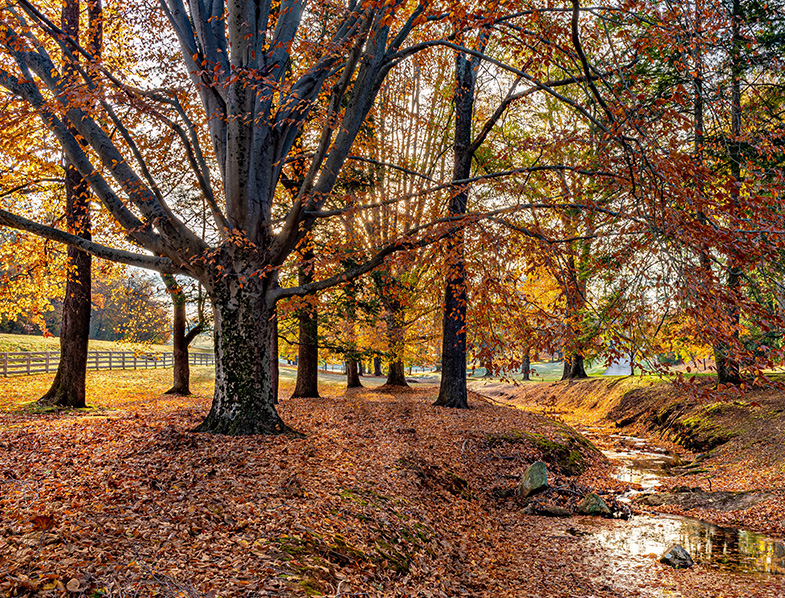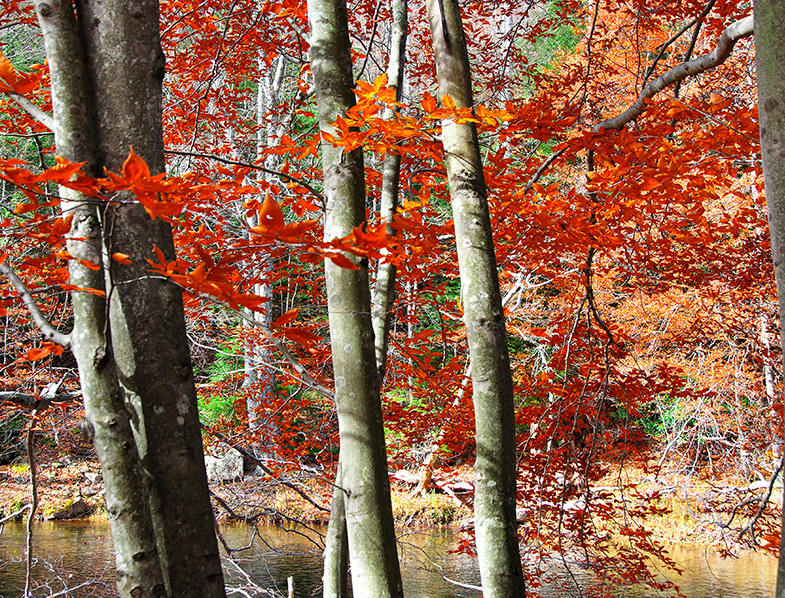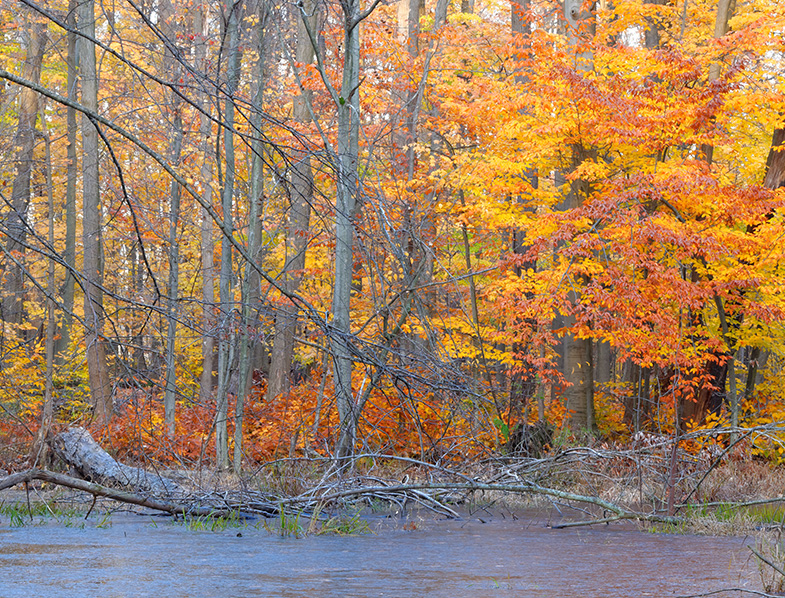Growing an American Beech Tree is a great way to beautify your garden while also benefiting the ecosystem. In this article, we’ll take a closer look at the characteristics of the American Beech Tree, how to choose the right location, planting techniques, and how to care for your tree to ensure it thrives for generations to come.
Quick Facts
| Characteristic | Description |
|---|---|
| Scientific Name | Fagus grandifolia |
| Height | Up to 100 feet |
| Width | Up to 80 feet |
| Bark | Smooth gray |
| Leaves | Deep green, broad, and ovate |
| Fall Foliage | Bright yellow |
| Reproductive Strategy | Produces spiny fruits called beechnuts |
| Native Habitat | Eastern United States |
| Range | Maine to Florida, west to Wisconsin and Texas |
| Soil Requirements | Moist, well-drained, various soil types |
| Sunlight and Shade | Partial shade |
| Space Considerations | Minimum 40 feet from buildings or other trees |
| Planting Time | Fall or early spring |
| Watering Requirements | Regular watering, especially during the first few years |
| Fertilizing Needs | Annual slow-release fertilizer in spring |
| Pruning and Maintenance | Pruning as needed, regular maintenance for health and pest control |
Understanding the American Beech Tree
The American Beech Tree (Fagus grandifolia) is a deciduous tree native to the eastern United States. It is part of the Fagaceae family, which also includes oak trees. American Beech Trees can grow up to 100 feet in height and spread out to 80 feet in width when fully mature. They are known for their smooth gray bark, deep green leaves, and spiny fruits.
The American Beech Tree has a unique and interesting history. Native Americans used the tree’s bark for medicinal purposes, and early European settlers used the wood for furniture and cooking utensils. Today, the American Beech Tree is a popular choice for landscaping and shade in urban areas.
Characteristics of the American Beech Tree
American Beech Trees have a shallow root system, which can make them susceptible to wind damage. However, they are also able to grow in a variety of soil types and can tolerate both wet and dry conditions. They also have a long lifespan, with some trees living for more than 300 years. The leaves are broad and ovate, and they turn a bright yellow in the fall, providing a beautiful display of autumn colors.
The American Beech Tree is also known for its unique reproductive strategy. The tree produces spiny fruits, called beechnuts, which contain two or three triangular nuts inside. These nuts are an important food source for many animals, including birds, squirrels, and bears.
Native Habitat and Range
American Beech Trees can be found in the eastern United States, from Maine to Florida and as far west as Wisconsin and Texas. They typically grow in hardwood forests and are an important component of many ecosystems. The tree is often found growing in mixed forests with other deciduous trees, such as oaks and maples.
The American Beech Tree is also an important component of the Appalachian Mountains ecosystem. The tree provides habitat for many species of wildlife, including black bears, wild turkeys, and red foxes. The tree’s nuts are an important food source for these animals, especially during the winter months when other food sources are scarce.
Importance in the Ecosystem
American Beech Trees provide an important habitat for many species of wildlife, including birds, squirrels, and deer. The tree’s dense canopy provides shade and shelter for these animals, as well as for other plants growing underneath the tree. Additionally, the nuts produced by the tree are an important food source for many animals.
The American Beech Tree also plays an important role in preventing soil erosion. The tree’s deep root system helps to anchor the soil in place and prevent it from washing away during heavy rains. The tree also helps to improve soil quality by adding nutrients to the soil as its leaves and branches decompose.
The American Beech Tree is a fascinating and important tree species native to the eastern United States. Its unique characteristics, history, and importance in the ecosystem make it a valuable and treasured part of our natural world.

Choosing the Right Location for Your American Beech Tree
Choosing the right location for your American Beech Tree is key to its growth and development. Not only will a well-chosen location provide the tree with the right conditions to thrive, but it will also ensure that it does not become a nuisance or hazard to surrounding structures or other plants. Here are some additional factors to consider:
Soil Requirements
American Beech Trees prefer fertile, moist soil that is well-drained. They can grow in a range of soil types, including sandy and clay soils. However, it is important to note that the tree does not tolerate waterlogged soil, so it is important to avoid planting the tree in areas that are prone to flooding. Additionally, it is important to avoid planting the tree in soils that are too alkaline, as this can lead to nutrient deficiencies. If you are unsure about the pH of your soil, you can purchase a soil testing kit from your local garden center or consult with a professional arborist.
Sunlight and Shade Preferences
American Beech Trees prefer partial shade, especially during the hottest parts of the day. Too much direct sunlight can be damaging to the tree and lead to leaf scorch. However, they also require some direct sunlight to thrive, so it is important to find a balance.
When selecting a location for your American Beech Tree, consider the amount of shade and sunlight it will receive throughout the day. If you live in a particularly hot or sunny area, you may want to consider planting the tree near other trees or structures that can provide some shade during the hottest parts of the day.
Space Considerations
American Beech Trees require plenty of space to grow, with a minimum recommended distance of 40 feet from any buildings or other trees. This is because the tree has a wide, spreading canopy that can reach up to 70 feet in diameter. Additionally, the tree has a shallow root system that can spread up to three times the diameter of the canopy.
As a result, planting the tree too close to other structures or plants can lead to root damage or competition for resources. If you are considering planting an American Beech Tree, it is important to ensure that you have enough space to accommodate its mature size. They are not suitable for small urban gardens and are better suited to large parks or wooded areas where they can grow and thrive without posing a risk to surrounding structures or plants.
By taking these factors into consideration, you can ensure that your American Beech Tree has the best chance of thriving in its new location. Remember to also consider the tree’s aesthetic appeal and how it will fit into your overall landscape design. With proper planning and care, your American Beech Tree can provide years of beauty and enjoyment.

Planting Your American Beech Tree
Once you have chosen the right location for your American Beech Tree, it’s time to start planting! The American Beech Tree is a beautiful deciduous tree that is native to North America. It can grow up to 80 feet tall and 50 feet wide, making it a great shade tree for your yard.
When to Plant
The best time to plant your American Beech Tree is in the fall or early spring, when the weather is mild and there is plenty of moisture in the soil. This will give your tree the best chance to establish its root system before the hot summer months or cold winter months. Avoid planting during the hottest parts of the summer, as the heat can stress the tree and make it more susceptible to disease and pests.
Preparing the Planting Site
Before planting, ensure that the soil is well-drained and that any weeds or other vegetation has been removed. The American Beech Tree prefers moist, well-drained soil that is slightly acidic. If your soil is too alkaline, you can add some sulfur to lower the pH level. Dig a hole that is twice as wide as the root ball of the tree, and deep enough so that the top of the root ball is level with the surrounding soil. This will give the roots plenty of room to spread out and establish themselves.
Planting Techniques and Tips
Place the tree in the hole and backfill with soil, firming it down gently. Ensure that the tree is upright and straight, and support it with stakes if necessary. You can also add a layer of mulch around the base of the tree to help retain moisture and suppress weeds. Water the tree thoroughly after planting and keep the soil moist for the first few weeks while the root system establishes. Once the tree is established, it will require less frequent watering, but be sure to water it deeply during periods of drought.
As your American Beech Tree grows, it will provide shade, shelter, and beauty to your yard. It is also an important habitat for many species of birds and other wildlife. With proper care and maintenance, your American Beech Tree can live for over 200 years!
Caring for Your American Beech Tree
To ensure that your American Beech Tree thrives for years to come, there are a few things you should do:
Watering Requirements
American Beech Trees require regular watering, especially during the first few years after planting. Water deeply, ensuring that the soil is moist to a depth of at least 8 inches.
Fertilizing Your Tree
American Beech Trees do not require regular fertilization, but an annual application of a slow-release fertilizer can help to boost their growth and health. Apply in the spring, just as new growth is beginning to emerge.
Pruning and Maintenance
Pruning is not usually necessary for American Beech Trees, but you can remove any dead or damaged branches as needed. Regular maintenance, such as mulching and checking for pests and diseases, can also help to keep your tree healthy and strong.

Conclusion
By following these guidelines, you can successfully grow an American Beech Tree that will benefit the environment and provide beauty and shade for years to come!
American Beech Tree FAQS
How long does it take American beech trees to grow?
American beech trees are slow-growing and can take several decades to reach their full maturity and height of up to 100 feet.
Are beech trees easy to grow?
Beech trees have specific growing requirements and care needs. While they are not considered difficult to grow, they may not thrive in all environments and require proper attention.
How do you grow an American beech tree from seed?
To grow an American beech tree from seed, collect fresh seeds in the fall and plant them in well-draining soil. Stratification, a cold moist period, is necessary for successful germination.
Where is the best place to plant a beech tree?
Beech trees prefer moist, well-drained soil and partial shade. They are commonly found in hardwood forests and are suitable for large landscapes or wooded areas.
Can beech trees survive winter?
Beech trees are hardy and can survive winter temperatures. However, young saplings may require protection from extreme cold and frost until they establish a stronger root system.
What are the disadvantages of beech trees?
Beech trees can be susceptible to certain diseases and pests, such as beech bark disease. Their shallow root system may also make them vulnerable to wind damage. Proper care and maintenance can help mitigate these risks.
